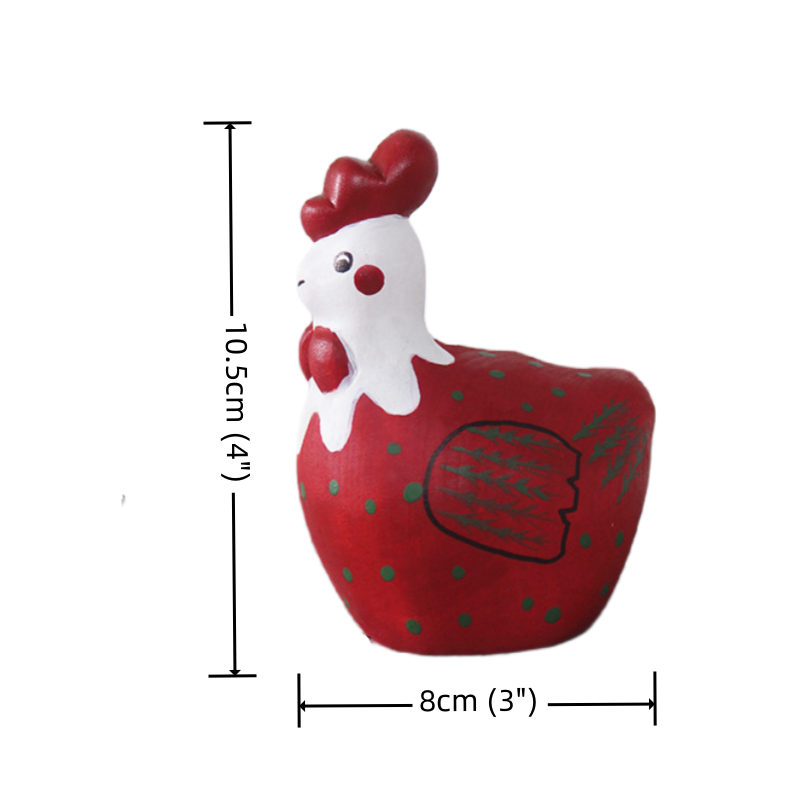
The growth stages of chickens
Share
The growth stages of chickens
 The growth stages of chickens are fascinating, with each phase showing a remarkable transformation. From the egg to adulthood, the journey showcases the bird's development, instincts, and adaptability. Here's a detailed look at each stage of chicken growth:
The growth stages of chickens are fascinating, with each phase showing a remarkable transformation. From the egg to adulthood, the journey showcases the bird's development, instincts, and adaptability. Here's a detailed look at each stage of chicken growth:
1. The Egg Stage
 Chickens begin their life enclosed within an egg. The egg incubates for approximately 21 days, during which the embryo develops into a chick. Conditions like warmth and humidity are crucial for successful incubation. During this period, the embryo grows rapidly, developing vital organs and features, all while consuming nutrients from the yolk sac.
Chickens begin their life enclosed within an egg. The egg incubates for approximately 21 days, during which the embryo develops into a chick. Conditions like warmth and humidity are crucial for successful incubation. During this period, the embryo grows rapidly, developing vital organs and features, all while consuming nutrients from the yolk sac.
2. Hatchling or Chick Stage
Once hatched, the chick emerges wet and fragile, covered in soft down feathers. At this stage, they are incredibly vulnerable and depend on warmth and food from their environment. Within hours, they begin to fluff up as their feathers dry. Chicks typically stay close to their mother or under a heat lamp to maintain the body temperature needed for survival.
3. Brooding and Feather Development
 n the brooding phase, chicks start to grow their juvenile feathers, gradually replacing their soft down with sturdier feathers. This stage is crucial for their thermoregulation as they begin to manage their body temperature more independently. At this point, their diet shifts to high-protein chick feed, which helps them grow rapidly. Chicks also become more active and start to explore their surroundings.
n the brooding phase, chicks start to grow their juvenile feathers, gradually replacing their soft down with sturdier feathers. This stage is crucial for their thermoregulation as they begin to manage their body temperature more independently. At this point, their diet shifts to high-protein chick feed, which helps them grow rapidly. Chicks also become more active and start to explore their surroundings.
4. Juvenile Stage
Around 4-6 weeks old, chickens enter the juvenile stage. Their plumage develops further, and they gain the characteristics of their breed, such as coloration and feather patterns. Juveniles start to establish their place within the flock, with some showing signs of dominant or submissive behavior. Their diet expands to include grains and greens, as they continue to build strength and size.
5. Young Adult/Adolescent Stage
At 12-16 weeks, chickens become young adults. Roosters might begin to crow, while hens start to show nesting behaviors. Their combs and wattles become more pronounced, and their plumage reaches full maturity. At this stage, chickens continue to grow in size and strength, preparing for their reproductive phase. Hens will soon begin to lay their first eggs, signifying the start of their adult life.
6. Adult Chicken

Chickens are fully grown at about 5-6 months. Hens lay eggs regularly, while roosters display their adult plumage and behaviors, like crowing and protecting the flock. Adult chickens have a balanced diet that supports egg production, feather maintenance, and overall health. Their daily activities include foraging, dust bathing, and roosting, which are essential for their well-being.
From fragile hatchlings to robust adults, chickens undergo a remarkable transformation. Understanding these stages helps in providing appropriate care and ensuring a healthy, productive flock.






















































